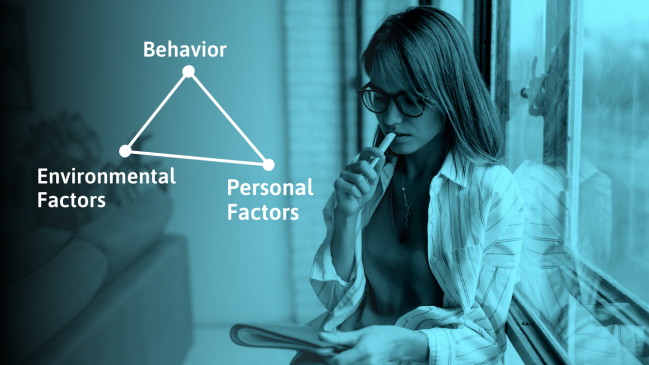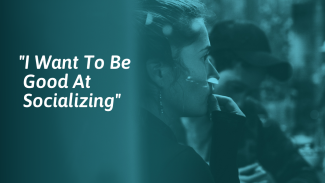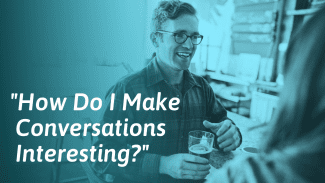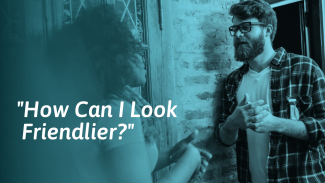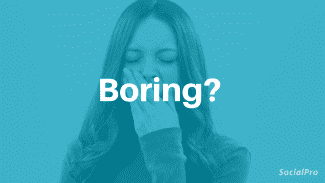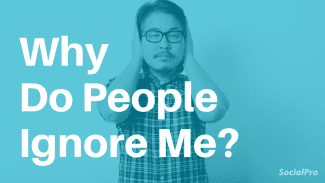What makes an individual learn new problem-solving techniques? What’s the best way for us to change our behavior? What role do our parents, friends, and the media play in what we learn about the world and our place in it?
Psychology tries to answer such questions with theories and experiments. Social learning theory revolutionized much of what we knew about learning when it became popular in the 1960s. The idea that people can learn through observation may seem simple, but it was not proven until that point. In fact, many people didn’t believe that it was possible at all. In this article, you’ll learn what social learning theory is and why it’s important.
Sections
- What is Social Learning Theory?
- The History Of Social Learning Theory
- Core Concepts Of Social Learning Theory
- Applications of Social Learning Theory in Everyday Life
- Strengths and weaknesses of social learning theory
- Common questions
What is Social Learning Theory?
Social learning theory proposes that learning is a cognitive process that occurs in a social context. Learning can happen through observation or direct instruction in social contexts, even without direct behavior reinforcement. The main idea of the theory—that a person can learn by watching someone else be reinforced or punished for their behavior—had not been scientifically accepted at the time it was proposed.
Social learning theory also claims that learning does not necessarily result in changed behavior and that internal states such as motivation play a significant role.
Psychologist Albert Bandura developed social learning theory following an experiment called “the Bobo doll experiment,” which showed that children tended to copy the play style of the adults they observed.
Bandura talked about four stages that are a part of learning:
1. Attention. We must be able to notice and observe a specific type of behavior to imitate it.
2. Retention. We need to remember the behavior to apply it to ourselves.
3. Reproduction. We have to be able to reproduce the behavior.
4. Motivation. We won’t imitate a learned behavior if we’re not motivated to do it.
The History Of Social Learning Theory
Before social learning theory, psychologists assumed that people learn primarily through being punished or rewarded by the environment for their behavior.
For example, a child sees that his parents smile when he tells a joke, so he makes more jokes. And when he leaves muddy footprints on the floor, his parents are angry, so he checks that his feet are clean before going indoors.
Bandura and others believed that such reinforcement wasn’t enough to explain all types of learning and behavior. Instead, just seeing someone else suffer a consequence for a behavior or be rewarded for it may be enough to trigger change.
Early research behind Social Learning Theory
To try and prove his theory, Bandura had 36 young boys and 36 young girls (all between the ages of 36 to 69 months) watch as two model adults (male and female) played with several toys, including an inflatable Bobo doll (the ones that get back up when you push them down). Then, the kids had an opportunity to play with the toys themselves.
In one condition, the adult model played with other toys while ignoring the bobo doll. And in the “aggressive” condition, after a minute of playing with the other toys, the adult male or female turned to the Bobo doll, pushing it, tossing it up in the air, and otherwise acting aggressively towards it.[1]
When the children had an opportunity to play with the toys themselves, they tended to imitate the type of play they observed by the adults. The children who watched non-aggressive play were more likely to color and play with the other toys, while those who watched the adults modeling aggressive behavior towards the Bobo doll were more likely to engage in aggressive behaviors towards it themselves.
Further studies throughout the years saw similar findings on the internal learning process through role models and imitation.
Bandura changed the name of “social learning theory” to “cognitive learning theory” in 1986.
Core Concepts Of Social Learning Theory
People can learn through observation
Understanding that people can learn through observation was a major breakthrough. It meant that people could learn without direct experience but rather from watching (or even hearing about) the behavior of others.
By modeling healthy behavior, parents can teach kids without giving explicit instructions. As adults, we can choose the type of content we consume to model the behavior we wish to emulate. Surrounding ourselves with responsible people with good communication skills can help us learn these skills ourselves.
For example, one study on foster teens found that those with an adult mentor had better outcomes in measures like less suicidal ideation and sexually transmitted diseases and more participation in higher education.[2]
Our mental states are important to learning
Bandura was one of the first psychologists to talk about how our internal mental states factor into the learning process.
According to Bandura, our thoughts and feelings impact our motivation to learn and change our behavior. The learner may receive external rewards for certain behaviors but not be motivated to engage in said behavior.
On the other hand, one may not receive external reward or recognition for learning something (say, how to play an instrument) but keep working at their new behavior due to the accomplishment they feel within themselves. Their feeling of pride acts as a reinforcement even if there are no external rewards.
Learning does not necessarily lead to change
According to social learning theory, someone can learn a new behavior, but they may be unwilling or unable to change.
We may have an internal process of doing something but not have the opportunity to practice. Many of us have seen examples of people golfing on TV and in movies but haven’t ever been on a golf course ourselves. There is no evidence in our day-to-day life that we learned anything from observing people golfing. Yet if someone were to put us on a golf course, we would have an idea of what to do.
Applications of Social Learning Theory in Everyday Life
Developmental psychology
Social learning theory stresses the importance of “practicing what you preach” when teaching kids. Because kids learn from observation, rather than just by instruction, lighting up a cigarette while telling a child they shouldn’t smoke can send a conflicting message.
Similarly, it forces us to think about appropriate punishments. Punishing violence or misbehavior by means such as spanking may backfire because the modeled behavior contradicts the instruction (using violence to tell someone not to use violence). [3] Therefore, a child may learn that engaging in violence is OK in certain conditions.
Criminology
Social learning theory can help understand individuals who engage in crime and juvenile delinquency. We may look into their family background or the environment they grew up in to see the behavior they observed and the ideas they formed about the world.
Of course, social learning on its own is not enough to explain why some people engage in crime. Criticisms of social learning theory say that it places too much emphasis on the environment. In the case of crime, critics argue that those who are naturally geared towards crime will choose to surround themselves with other such people.
Media violence
The popularization of social learning theory has led parents to become increasingly worried about violence in the media, mainly media geared towards kids. Since then, there have been numerous studies and a scientific debate on the influence of media violence on kids.[4]
Some studies have found that violent media affects childrens’ behaviors, but other experiments didn’t prove such a link. While the research remains inconclusive, social learning theory has played a big part in this complex argument.
Creating social change with media
The idea is that since we can learn from models, we can help create social change by showing positive models in the direction that we’d like society to go towards. For example, if we want to work towards a cleaner, more friendly world, we may choose to show characters being kind to each other or cleaning up beaches.
One study on the effects of social learning through mass media showed that teenagers exposed to sexual content in media were more likely to engage in sexual behaviors at a younger age.[5]
Today, new shows like Big Mouth and Sex Education try to give a more balanced portrayal of teenage sexuality in the media.
Children also learn gender roles from the media. Studies on gender roles and portrayals of male and female characters find that women are under-represented in media. When women appear, it is typically in either sexualized contexts or caretaking roles such as mothers, nurses, and teachers.
Showing a broader range of female characters across different career choices can change the messages young girls internalize of the behaviors expected from them as women.[6]
Psychotherapy
Bandura saw psychotherapy as a learning process where one can learn new behaviors and recondition old beliefs.[7]
A good psychotherapist can model healthy behavior to a client. For example, by staying calm and listening when the client brings up criticisms, instead of getting defensive, the therapist teaches their client healthy conflict skills without needing to give direct instructions.
Strengths and weaknesses of social learning theory
One of the main strengths of social learning theory is that it offers a new perspective on why individuals may act differently in different environments. For example, a child may act one way in school and another at home, even if the behavior is rewarded the same way. Another strength is that social learning theory accounts for internal processes in the learner and the fact that learning may occur even when we cannot see changed behavior.
A core weakness in social learning theory is that it struggles to explain why some people are exposed to the same models but react differently. For example, when two kids watch the same violent TV show, and one reacts by playing aggressively afterward, but the other doesn’t. Social learning theory does not take into account all behaviors.
Critics of social learning theory say that it removes accountability for behavior from the individual and places it instead on society or the environment.
Overall, social learning theory has added a lot to our understanding of how people learn, but it does not offer a complete picture.
Common questions
Why is social learning theory important?
Social learning helps us achieve a deeper understanding of the learning process. Social learning applies to many aspects of daily life, including education, social work, sociology, and mass media.
Where does the concept of social learning come from?
The concept of social learning comes from experiments in psychology that showed that young children imitate the behavior of adults. Further studies demonstrated that adults engage in imitation, and social learning occurs throughout our lives.[8]
How are models used in social learning theory?
There are three ways models can be used in social learning. We learn from live models by seeing real people behaving in different ways. Instructional models provide descriptions of behaviors (e.g., a teacher in a classroom). Symbolic models are those we see in media such as TV or books.[9]
